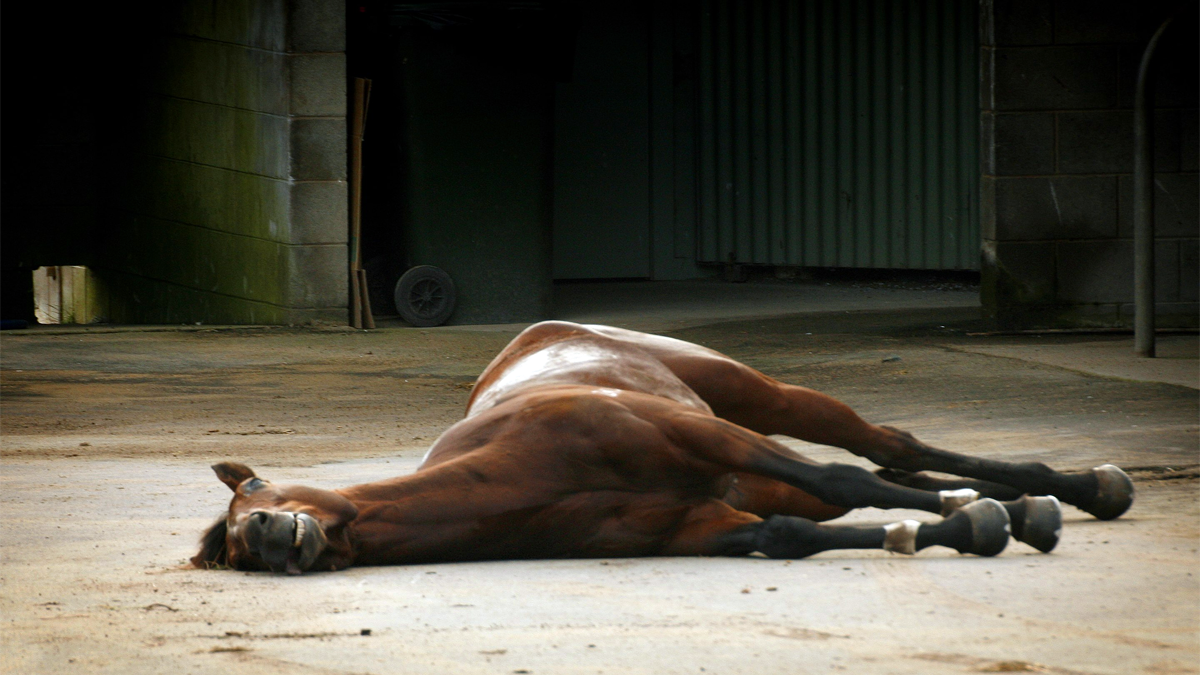

When the thrill of the race ends in tragedy, it’s a gut punch to the sport. Known for its thrilling events, Cheltenham Racecourse is a cornerstone of horse racing worldwide. However, the recent tragic incident raises questions about safety standards, training, and the welfare of horses. The world of National Hunt racing witnessed a dark day as three horses tragically lost their lives.
Watch What’s Trending Now!
The incident sparked controversy and reignited the debate over the dangers associated with the sport, leaving both fans and critics angered and saddened. While some analysts attribute the problem to the system of horse breeding and training, others argue that such accidents are isolated events. But how do these horses die?
ADVERTISEMENT
Article continues below this ad
The Cheltenham race cost horses their lives
The mood at Cheltenham Racecourse turned sombre when three out of forty horses tragically lost their lives, including Abuffalosoldier. The winner’s position remained unclaimed, as Abuffalosoldier died after securing victory in the valuable Holland Cooper Handicap Chase. The race, scheduled at Prestbury Park near Cheltenham, Gloucestershire, England, took place on November 17.
One death could be considered a tragic incident, but another horse died within five minutes—Bangers and Cash—after jumping the 14th fence. Both of them are suspected of cardiovascular collapse. That’s not all; in the next race, a horse named Napper Tandy failed to jump ‘the safer to view’ hurdle, broke his neck, and died. This new type of hurdle has already taken the lives of many horses since its inception.
ADVERTISEMENT
Article continues below this ad

According to Liam Kearns, a vet on duty at Cheltenham, this is a pure coincidence, and it’s not safe to say that it was a cardiovascular collapse or a major blood vessel. While talking to Racing TV, he also mentioned, “Vets are deployed all around the racecourse, so both horses were attended within seconds. It’s a high-intensity racing situation—we have similar every time a marathon or a long-distance race is run.”
ADVERTISEMENT
Article continues below this ad
Animal Aid’s horse racing consultant Dene Stansall held the organization responsible and said, “Britain’s largest commercial horseracing organization, The Jockey Club, must take full responsibility for the deaths on its Cheltenham Racecourse—Britain’s most deadly turf arena.” He further added, “Both they and the racing welfare regulator, the British Horseracing Authority, have not taken adequate measures to stem a consistent flood of deaths across racing. A ban on racing is the only answer to stop this lethal animal abuse.” These deaths prompt urgent actions, regarding safety, training procedures, and review of the hurdles. Fans and the race-horsing world are very saddened by the incident and question the safety of animals during these races.
“Awful that happened”: Fans react to the incident
Equestrian performance activity is an activity loved by horse lovers; now these races are raising concerns due to these deaths. Fans are saddened and angry by the incident and raising questions over the harsh training. One fan commented on the incident, “I’m beginning to think there is now a fundamental issue with how NH horses are being bred. They are becoming more fragile, and that, mixed in with the training that they are going through as well, seems to make them more prone to injury and fatalities.” Another fandom said, “Looks like they are being raced too hard. I used to love racing, but I struggle with it now. How can animals dying be justified for sport?”
At least 172 horses died this year due to racing on British racecourses, which raises concern over the protection of the horses. According to PETA, between 700 and 800 horses get injured every year on the racetrack. The same incident occurred in March 2024 and led to the deaths of two horses—Highland Hunter and Ose Partir.
Another fan also shared the statistics of the horse deaths: “Statistical anomaly but thoughts & prayers to connections 🤮. 12 horses died in November (so far), and 15 horses died in October.” This shows how risky these races are; one comment reads, “5 horses die every fortnight on course. It’s a tough game. They are impeccably looked after in life, and there are many welfare issues in society.”

According to the Horse Racing Integrity and Safety Authority (HISA), 1.32 deaths per 1000 horses were recorded last year and 1.25 by the Equine Injury Database the previous year. Three deaths in one day can happen again as long as NH racing exists if no action is taken. It was not only horse races that led to death but also brutal treatment by their owner is a reason for animal deaths.
“The 2nd last hurdle needs looking at, and I would think they may look at the distance of the Chase,” a fan raised concern. Another horse lover commented, “Unfortunately, Cheltenham is consistently the top death track in the UK each year. When you take into account how many meetings are run there, it’s shocking. What causes it? Well, not the track nor the obstacles. Humans, whether battering a tired horse home or poor training. It’s us.”
Cheltenham has recorded higher death rates compared to other UK racecourses, raising concerns among horse welfare advocates. To address the issue, suggestions have been made to redesign the hurdles, review race lengths, and prioritize animal safety. While time may cause us to forget these heartbreaking incidents, the deaths of horses remain a serious concern for future threats. Measures must be implemented by the relevant authorities. Will this incident be forgotten, or will it lead to change? Only time will tell.
ADVERTISEMENT
ADVERTISEMENT
ADVERTISEMENT
ADVERTISEMENT


